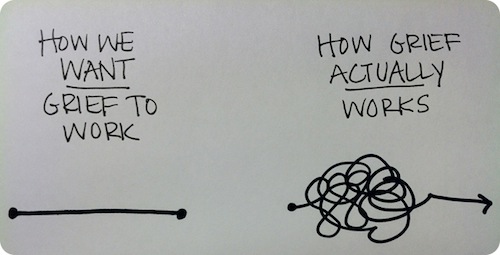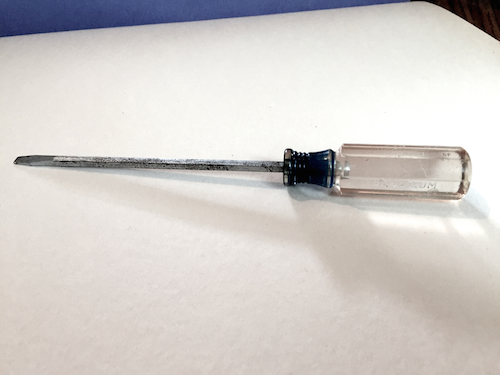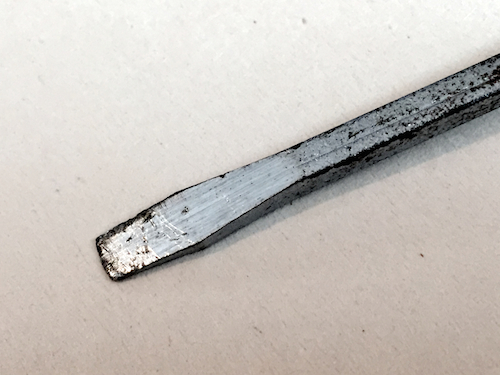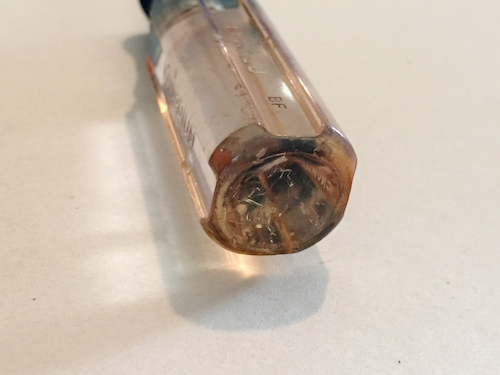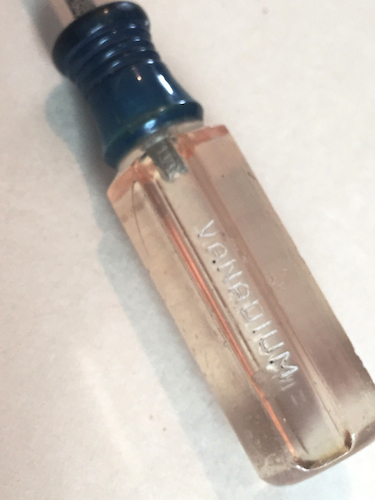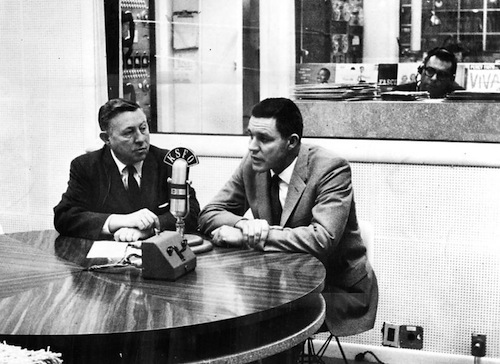Crib Notes – Oddball Interview Questions Answered!
You wanna cheat a little? I’ll help you. C’mon, over here.
You didn’t get this from me but…
Yesterday in the SFGate I read an article that gave examples of “oddball” interview questions asked by Silicon Valley companies.
Interview Questions
As I read through them, I found them quirky (like most Silicon Valley companies) but not really that all that odd.
Given that I’ve got twenty years of being a manger under my belt and for most of the twenty years I have been recruiting in one form or another, I actually was pretty on board with many of these questions.
For the past two years at my current employer I have consistently either been interviewing for myself or sitting on interview panels. I’ve thought a lot about the all truly terrible candidates I’ve seen and how I wanted to take each of them aside for some coaching.
So many good people just can’t find their way around a curveball interview question and that can really hinder their chances at getting hired.
When I started reading these so called “oddball” questions in the article, I thought about how I would answer them (or I would want a candidate to answer).
From there I decided to make a cheat sheet. Think of this as my free interview coaching and mentoring for the people out there hustling and trying to get a job. We all deserve to earn a paycheck and sometimes that barrier seems unreasonably high.
I have shown the question exactly as stated in the article and in parenthesis is the job role that this question applied to.
Here we go:
1) Describe the color yellow to somebody who is blind? (flight attendant)
First off, as a longtime interviewer, I think this is a genuinely lame question. You are just trying to throw the candidate off their game. Perhaps that is the goal.
However, since this applies to a flight attendant, I believe the interviewer is trying to see how you can apply complex concepts (such as, oh I don’t know, FAA regulations) to someone with no frame of reference for those concepts (such as any clueless airline passenger).
Here’s how I would answer it:
Since a blind person does not have visual cues to reference I would want to reference their other senses. When I think of yellow in other sensory terms, I might, for example, ask the person how it feels when they are outdoors and feel the sun on their face, because that is how yellow feels to me. Or ask them to think of how a freshly cut lemon smells because that also invokes the color yellow for me.
2) What is your favorite 90’s jam? (customer care)
As this is a customer care role, they are looking to see how relatable you are. Instead of trying to impress the interview panel with your knowledge of obscure indie rock, I suggest going a bit mainstream with an edge to show you have some verve but you can also relate to the common person.
Here’s how I would answer it:
There are so many groundbreaking artists from the 90’s but I have to go back to the band that for me really defines the 90’s music, and that is Nirvana. Kurt Cobain’s complex musical genius stands up today. I can’t help but crank up “Smells Like Teen Spirit” every time I hear it, even if it’s just playing in Muzak form on the elevator.
3) If you were asked to unload a 747 full of jellybeans, what would you do? (IT support manager)
The interviewer is trying to get at the candidate’s thought process for solving big problems. I suggest giving them a pretty detailed answer to show how you assess the root cause of the issue and put a plan in place to resolve the problem.
This is one area where A LOT of candidates fail, in my opinion. Almost all interviewers ask some form of this question, i.e. show me how you solve a problem. Most candidates are unable to show me how they get from point A to point B to final completion. It drives me batty.
Here’s how I would answer:
First I would need to assess in what form the jellybeans were loaded onto the 747. Are they neatly wrapped in boxes? Then I would assess how many and what size boxes and then form the appropriate team to efficiently load the boxes onto pallets and schedule forklifts to quickly remove them from the plane then work with logistics to get them delivered to their proper location or locations.
If the jellybeans are loose on the plane, that is a much bigger problem. First I’d have to assess if they are piled up to the doors and how I can crack open that door without losing a lot of the cargo. I’d consult with experts in the jellybean packaging field to understand how to load out the jellybeans into boxes or other appropriate packaging and then obtain that packaging and other equipment that might be needed. I would then form the work team to first package the jelly beans then find the right crew to offload the packaging onto pallets and then forklifts to allow logistics to them move them their final destination.
4) What did you have for breakfast? (retail clothing sales associate)
This question is just intended to get a candidate out of the rote answer and response mode. Fine. Kind of a lame way to get there if you ask me, but okay.
How I would answer:
This morning I had a homemade breakfast burrito that included eggs, non-dairy cheese since I am lactose intolerant, green chile and some pinto beans. I like a nice mix of protein and carbs to start my day. And I washed all of that down with a nice soy latte. Gives me a good base for the day’s energy requirements without pesky drops in blood sugar.
5) What would you do if you were the one survivor in a plane crash? (Trust and Safety investigator)
Okay, given the job role being considered as a safety investigator, I don’t really consider this one an “oddball” question at all. This is right in their wheelhouse and I think anyone with these skills applying for this job would have a solid answer.
Here’s how I would answer it but I may be off base given the job function where I have no experience in this function:
Immediately following the incident I would quickly determine that I truly was the only survivor and would make sure I gave aid to any other passengers who may still be alive. If I am genuinely the only person alive, then I would stop and assess the situation. First I would look to see if the communication system of the plane still works. Am I able to contact someone for assistance? Then I’d also look for flares or other ways to flag down help.
From there I would study the surroundings. Where am I? What are the prevailing conditions, i.e. am I in the water? Am I in the snow? Is it very hot or cold? I would begin by constructing some form of shelter against the elements. Then I would search the plane’s remnants for food and water and collect those together in a single location. I would also begin looking for a source of heat. Then I would need to consider the potential dangers and find ways to prepare. For example, am I in the woods and is there potential for bears or wolves to attack? Then I must take proper precautions with my food and water and maybe a means of defense if needed.
(this response could really go on and on in my opinion, but you get the idea where I’m going)
6) If you woke up and had 2,000 emails and could only answer 300 of them, how would you choose which ones to answer? (Rotation program candidate)
This is just another form of “here’s a problem, show me how you would resolve it”
Here’s how I would answer:
I’d take a first run through the email to see if any of the subject lines list “RUSH” or “URGENT” and attend to those first looking to be sure there was not a long chain of conversation on the issue and if it was already solved.
Then I would sort the email to look for groups of long chains of email conversations and then review them based on subject line to determine which take priority then only open the very last item in the conversation chain, as that will contain all of the prior information. If that last email resolves the problem then I’d move on to the next chain of email.
7) What’s your favorite Disney princess? (fast food crew member)
I personally balked hard at this question, I think it’s not really a suitable question, but again, designed to throw the candidate off their game to see how they think on their feet.
Here’s how I would answer:
While every Disney princess has their merits and detractions, I think I would say my favorite is Ariel from the Little Mermaid. Why? Because for better or worse, she had a clearly defined goal and a clearly defined methodology for obtaining that goal. While I may or may not completely agree with how she went about it, I respect that she got results, i.e. marrying the Prince.
8) Who would win a fight between Spiderman and Batman? (medical simulationist)
This is another of those not really oddball questions given the job role. In this scenario they are genuinely looking for the candidate to create a simulation and then run it through.
I have to admit, this one is going to be a bit hard for me as I’m not that well versed in the superheroes, but here’s my shot at it.
Here’s how I would answer:
What we’re looking at here are people with different sets of skills and tools at their disposal. Spiderman’s talents are a bit more organic, he’s strong, he moves well and he’s got that webbing that he can use very well to his advantage.
Batman comes fully loaded with a lot of sophisticated gadgets that he can employ at his disposal.
So who would win the fight? Well, that’s tough to say, but given the backstory and maturity of the superheroes, I tend to lean toward Batman. He’s older and more experienced and very savvy about the world. Spiderman is a bit younger and more impetuous. He has moments of brilliance but also has made some big mistakes.
Also, Batman has very little to lose while Spiderman has more family and a girlfriend to fight for. Given the battles, usually the one that has nothing to lose will fight the hardest.
9) How many people flew out of Chicago last year? (software engineer)
Ugh. What a question. What the interviewer is looking for is not that you can quote the number off of the top of your head but how you will go about getting to the number. Again, solve a problem and show me how you’ll do it.
Here’s how I would answer:
Well, since I don’t retain this sort of data off the top of my head I cannot give you an exact answer, but let me tell you how I would go about gathering that information. It could be as simple as a Google search of the question, but I’d want to be sure that in addition to O’Hare and Midway that I am accounting for all small regional airports and airlines.
If a simple Google search could not net me the answer then I’d expand my search. I am sure that there are many statistical bureaus (often used by marketing agencies) that have this kind of information readily available either for free or at low cost.
If that doesn’t work I would then try contacting FAA personnel to find the answer. I suspect that the FAA would be curious as to why I’m asking the question, so I’d want to be able to define the use of this data and make any assurance that I’d keep data confidential if needed.
As a last resort, I would compile a list of every airport in Chicago and then call each airport directly to request the information.
10) If you had a machine that produced $100 a day for life, what would you be willing to pay for it today? (research analyst)
Another question that doesn’t seem so oddball when you look at what job role is being recruited. This one is pretty hard to answer off the top of my head. And another example of here’s a problem, show me how you’d solve it.
Here’s how I would answer:
This machine would provide me an extra $36,500 a year. I would then want to consult actuarial tables to understand my personal life expectancy and then run a value analysis of that $36,000 over the remaining years of my life to understand the total present value in today’s dollars.
Then because I am a negotiator I would set a range of 15% to 30% off of that number because I think that while the machine has value, there is also upkeep and maintenance to consider and also I just like to get a deal. I’d also investigate why the person selling the machine would get want to get rid of it and bake that into my negotiation plan.
(Probably not the right answer for the job role but that’s how I’d play it. If they wanted me to actually quote a number I’d ask for a few moments and some scratch paper to work it out.)
11) If you were a Muppet, which would you be? (Executive support)
This is kind of a cute and fun question. I like it and wonder if I can add it to our list of questions for candidates. This gives a moment of lightness and shows how the candidate thinks on their feet.
Here’s how I would answer:
This is a tough question because each Muppet has their advantages. I like Fozzie Bear because he’s funny and very kind and incredibly supportive of Kermit through trials and tribulations. I like Gonzo because he’s a risk taker and doesn’t get discouraged when he fails. But ultimately I’d like to be Kermit, he’s talented, smart, kind and he knows how to keep that show running show even when chickens are flying out of cannons and monsters are eating the guest host.
12) Why is the earth round? (software engineer)
This must be an engineering question because this one stopped me in my tracks. That will really throw a candidate off their game.
Here’s how I’d answer.
The earth isn’t actually round, it’s more of an elliptical shape.
If they follow up with why is the earth an elliptical shape I’d take what tiny bit of knowledge I have and say it’s because of gravity. For example, when I put a magnet in a pile of iron shavings it will pull them into a circular shape. The oval shape is easiest to form for nature to build and highly aerodynamic as earth hurtles through space.
(starting to drift into making things up at this point! Time to wrap up this answer.)
13) How many gas stations are there in America? (Senior financial analyst)
This one again seems to fit the job role they are recruiting for. They don’t expect you to know the number but to explain how you’d get there.
My answer is going to be very similar to the number of people flying out of Chicago question.
Here’s how I would answer:
Well, since I don’t retain this sort of data off the top of my head I cannot give you an exact answer, but let me tell you how I would go about gathering that information. It could be as simple as a Google search of the question, but I would want to be sure that I understand that all gas stations are included in the data set. Do we include Hawaii and Alaska or just continental America? Do we include the US territories?
If a simple Google search could not net me the answer then I’d expand my search. I am sure that there are many statistical bureaus (often used by marketing agencies) that have this kind of information readily available either for free or at low cost.
If that doesn’t work I would then determine if there is a government oversight agencies for all gas stations that may have this information available.
I would also want to ask the person requesting this information if they need a precise answer or a ballpark. That makes a significant difference in the level of effort to get this data.
14) You have a 1 mile long x 1 mile wide private island you wish to turn into a resort. A plane requires a 2 mile long runway to take off. What do you do? (QA analyst for a gaming company)
Another question that seems oddball until you see the job function. A good QA person should know how to look at a problem and look at a lot of possible solutions. I am not a QA person but I can take a good run at this question.
Here’s how I would answer:
Simple, I’d see about getting a seaplane to transport guests to and from the island. No terrestrial runway is necessary.
If the seaplane is not feasible, then I’d consult with the proper experts in building sturdy runways over water (many exist, the San Francisco airport is but one example). I’d need engineers to assess the ground under the water to see if it can support the pylons. And I’d need to understand the cost to build such a runway and run through my business plan to see if the expected income from the resort could cover the enormous debt outlay to build the runway. I’d also check with the airlines to see if they would help subsidize some of the costs to build the runway.
15) Given 25 swimmers and a pool with five lanes, what is the minimum number of heats needed to determine the three fastest swimmers in the group? (data scientist candidate)
I’d suspect a data scientist would rattle the answer off the top of their head. I’m just a lowly MBA so I would ask if they want the exact answer or understand my thought process on how I’d get to the answer. Assuming they want a number I’d ask for a few moments and some scratch paper to figure it out.
Here’s my answer and I’m pretty sure it’s wrong:
5. I’d run each heat with a swimmer in every lane, which would take five heats to get all 25 through. I’d time the heats and then I’d know who was fastest. If I’m not timing the heats then I’d need a sixth heat for all of the first finishers from the beginning five heats.
16) How much do you charge to wash every window in Seattle? (sales operations candidate)
Okay, this is a really long list of questions and I’m getting tired and a little cheeky at this point. I’d probably snap off something like “enough to cover costs and make a reasonable profit” but what I do know is that, like many of these questions, they are looking at how the candidates will show how they get the information.
Here’s how I would answer:
First I would need to do some data mining. How many windows are there, how much is my cost per window, how many windows can be washed in a day, how many crew members do I need per buildings and how fast does the window washing need to be completed? Then I would run some data modeling to understand my costs and establish my projected profit margin on top of costs.
Then knowing that any customer wants to negotiate, I would work to understand where my gives and takes are. Can I cut costs back in some area (i.e. smaller crews that would take longer to complete)? I would pad my profit margin going in with the original quote knowing I will give some of that up.
I’d also look to see if any or all of the work can be subcontracted out if window washing is not my firm’s core competency.
————
Okay, I can’t believe I was actually inspired to answer all sixteen of these questions, but I was. Mild OCD can be a beautiful thing sometimes.
But to be honest, if this even helps one person get their thinking straight so they can go in and knock out an interview, than I have done a good thing.
I actually had fun with these questions. I suppose I like a good (quirky) challenge.
I’m curious if anyone out there has better ideas for some of these questions. I’d love to hear your take!

Image by Barun Patro and used royalty free from FreeImages.com.

